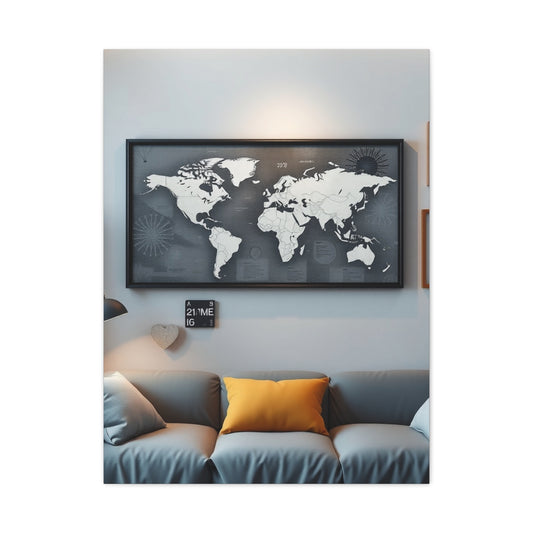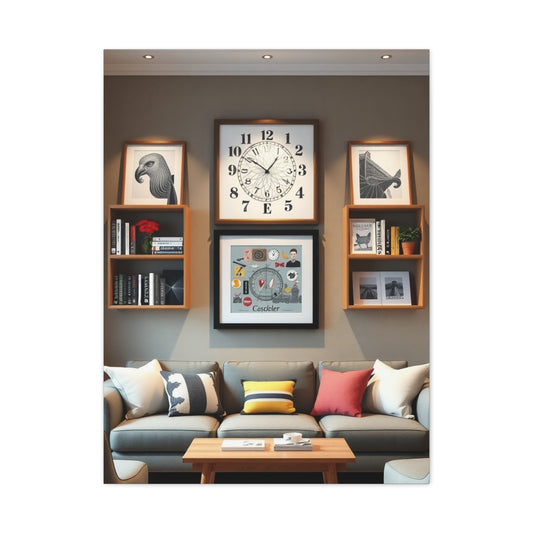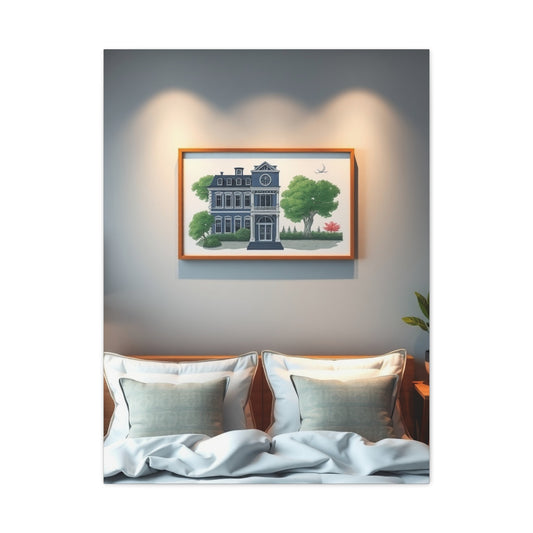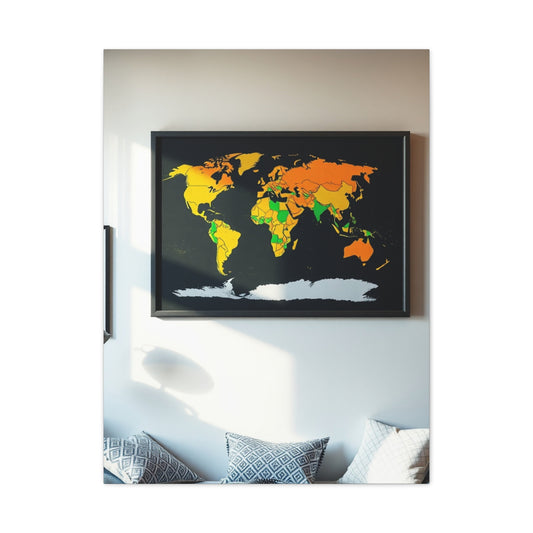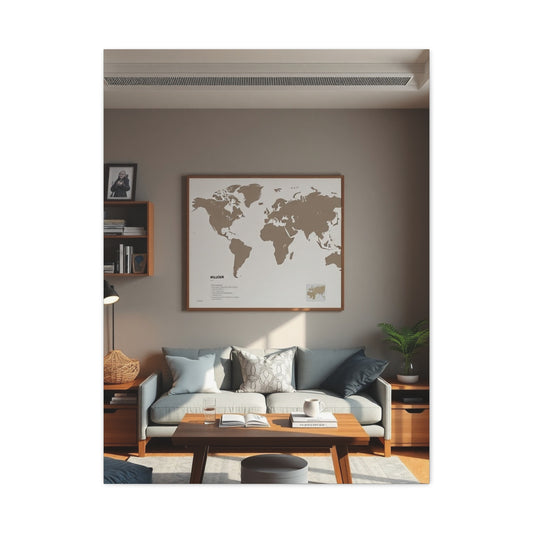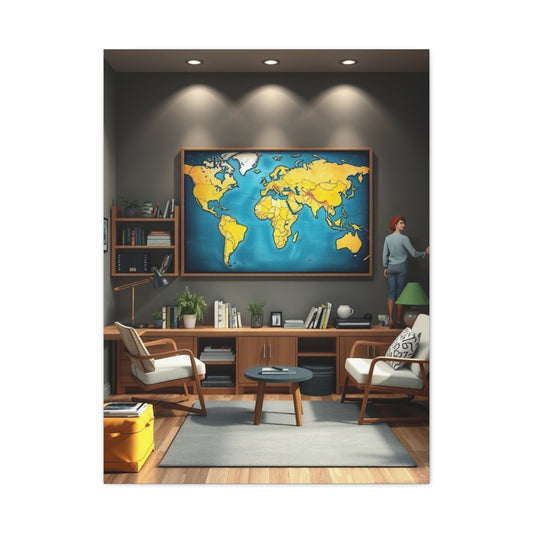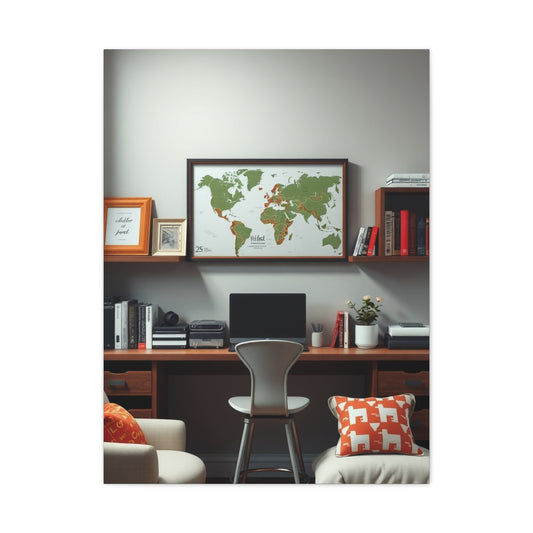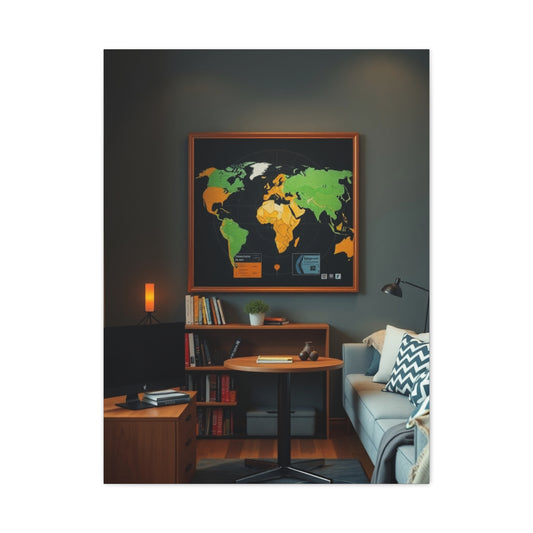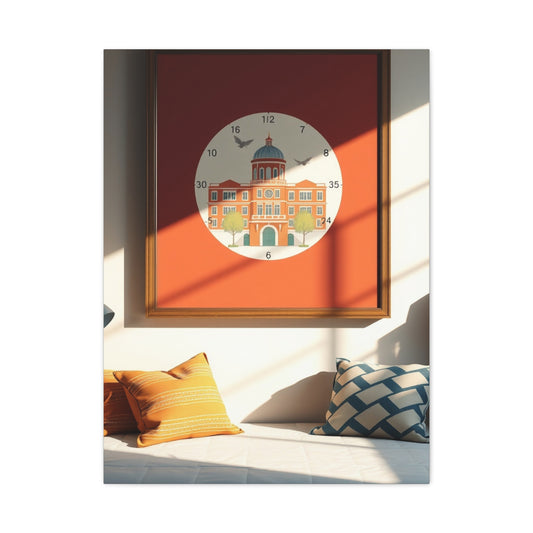-
Masterpiece College Room Decor Art Vision Wall Art & Canvas Print
Regular price From $141.23 USDRegular priceUnit price per -
Collection College Room Decor Art Art Wall Art & Canvas Print
Regular price From $141.23 USDRegular priceUnit price per -
College Room Decor Art Refined Canvas Wall Art & Canvas Print
Regular price From $141.23 USDRegular priceUnit price per -
College Room Decor Art Supreme Canvas Wall Art & Canvas Print
Regular price From $141.23 USDRegular priceUnit price per -
Elite College Room Decor Art Vision Wall Art & Canvas Print
Regular price From $141.23 USDRegular priceUnit price per -
College Room Decor Art Luxury Canvas Wall Art & Canvas Print
Regular price From $141.23 USDRegular priceUnit price per -
Vision College Room Decor Art Art Wall Art & Canvas Print
Regular price From $141.23 USDRegular priceUnit price per -
College Room Decor Art Supreme Gallery Wall Art & Canvas Print
Regular price From $141.23 USDRegular priceUnit price per -
Supreme College Room Decor Art Collection Wall Art & Canvas Print
Regular price From $141.23 USDRegular priceUnit price per
Student-Friendly Wall Décor: Elevate Your Dorm with Unique College Room Wall Art
Stepping into a college dorm or student apartment for the first time is both exciting and daunting. For many young adults, it marks the beginning of a new chapter filled with independence and self-discovery. While these rooms provide the basics such as a bed, desk, and wardrobe, they are often generic, uniform, and lacking warmth. The plain walls and identical furnishings can feel uninspiring, leaving students craving an environment that reflects who they are.
This is where wall art becomes a powerful ally. Decorating with carefully chosen pieces not only elevates the look of the room but also infuses personality into a space that otherwise feels temporary. It has the ability to transform dull walls into expressive surfaces filled with color, meaning, and creativity. With the right choices, students can craft an environment that nurtures comfort, sparks motivation, and invites connection with others.
A dorm room is more than just a place to sleep—it becomes a study zone, a hangout spot, and sometimes even a sanctuary when the stresses of college life feel overwhelming. Surroundings have a direct impact on mood, productivity, and overall well-being. Blank, sterile walls can unintentionally contribute to feelings of isolation or homesickness, while a thoughtfully decorated space creates warmth and familiarity.
Wall art helps students claim ownership of their environment, turning an assigned room into their room. Whether it’s through framed posters, tapestries, canvas prints, or DIY creations, these elements express identity and individuality. For many students, décor is an extension of their personality—it tells roommates, friends, and visitors something about who they are and what they value.
Why Wall Décor Matters in a Student Space
When students first step into a dormitory or shared apartment, the environment often feels sterile, temporary, and lacking warmth. The plain white walls, standardized furniture, and identical layouts rarely provide a sense of individuality. In such settings, wall art becomes more than just decoration—it becomes a powerful tool for transforming an impersonal space into a sanctuary of identity, comfort, and inspiration.
Wall décor carries a unique ability to mirror personal taste. At a time in life when students are navigating independence and self-discovery, having visual elements that resonate with their passions, ambitions, and memories makes a profound difference. Posters of favorite musicians, photographs from travels, or artistic illustrations tied to personal interests give life to an otherwise uninspiring backdrop. This personalization ensures that the room feels like more than a temporary stop; it feels like a home in which the student belongs.
Another vital role of wall art lies in its impact on emotions. The environment we live in has a strong influence on mental state, and the colors and imagery surrounding us contribute significantly to mood. Bright, lively tones can bring energy to mornings and boost motivation before a study session. Calming hues, such as soft blues, greens, or neutral palettes, can foster tranquility and provide a peaceful setting ideal for concentration or rest. For students balancing hectic schedules, late-night study hours, and the stress of exams, art serves as an anchor for emotional balance.
Wall art also plays an important role in building social connections. Moving into a dorm often means sharing space with new roommates or welcoming visitors into a personal environment. Unique artwork displayed on the walls can spark conversations, offering a glimpse into one’s personality without a word being spoken. A poster of a favorite band might lead to discovering shared music interests, while travel photographs can inspire engaging conversations about culture and experiences. This silent storytelling through art helps break the ice and creates bonds with others in an otherwise unfamiliar setting.
One of the greatest advantages of wall art is its adaptability. Unlike heavy furniture or permanent design elements, art can be easily swapped, rearranged, or updated. This makes it an ideal choice for students whose tastes evolve throughout their academic journey. A set of motivational prints might suit the first year of study, while more abstract, creative pieces may reflect a newfound passion discovered later on. This flexibility ensures that the living space can grow alongside the student, always staying relevant to their current stage of life.
Practicality also adds to the appeal of wall art in student housing. Most dorms come with strict guidelines—no drilling, painting, or permanent fixtures. Wall art, whether in the form of posters, decals, canvases, or tapestries, provides a solution that abides by these rules while still allowing freedom of expression. Lightweight, portable, and non-damaging options ensure students can decorate without risking penalties or damaging property. This practicality, combined with its creative potential, makes wall art the perfect balance of functionality and aesthetics.
Furthermore, wall art helps establish zones within a small space. A dorm room often serves multiple purposes—it is a bedroom, a study corner, and sometimes a social hangout. By selecting different types of art for different walls, students can visually separate areas. For instance, a calming print above the bed can enhance relaxation, while a motivational piece near the desk can reinforce focus. This subtle arrangement allows the room to cater to varied needs without requiring major changes.
Beyond visual impact, art carries emotional depth. A collage of family photographs can ease feelings of homesickness, reminding students of loved ones. A favorite quote displayed prominently can provide encouragement during tough academic periods. Each piece on the wall becomes more than just décor—it becomes a source of strength, comfort, and motivation.
Why Wall Art Is Essential in a College Room
Decorating a student room goes far beyond simply filling it with furniture or hanging a few posters. It is about creating a space that reflects personality, encourages productivity, and provides comfort during one of the most transitional times in life. For many students, their dorm or apartment bedroom is not just where they sleep—it is their study area, social hub, and personal retreat. Designing it with a specific style theme can give structure to the décor process and make the room feel intentional rather than temporary. Below are some popular themes that students often choose, along with the benefits and creative ways to achieve them.
The minimalist approach focuses on simplicity and order, which can be ideal for students managing busy schedules. A minimalist student room reduces clutter by sticking to essentials: a clean desk, functional storage, and neutral colors like white, beige, or gray. Wall art and accessories are kept simple—perhaps one or two framed prints or motivational quotes. This theme works well for those who want a calm environment that minimizes distractions while studying. Adding plants or a single pop of color through bedding can prevent the room from feeling too sterile.
The boho aesthetic remains popular with students who enjoy a free-spirited, artistic vibe. This theme is characterized by layered textures, warm earthy tones, and eclectic décor. Think macramé wall hangings, patterned rugs, and cozy throws. Bohemian style allows freedom of expression since mismatched patterns and vintage finds are encouraged. Students can display travel souvenirs, handmade crafts, or secondhand market treasures to make the room unique. String lights and tapestries often play a central role, creating a relaxed and welcoming atmosphere that is perfect for both study sessions and casual hangouts.
For those who prefer a bold, urban look, the modern industrial theme brings raw and edgy energy to a student room. This style is inspired by loft apartments and factory aesthetics, featuring exposed brick wallpapers, metal bed frames, and dark wood or black furniture. Students can use geometric wall art, wire storage baskets, and minimalist lamps to enhance the look. Although industrial can seem heavy, balancing it with soft fabrics like a knitted blanket or a rug adds comfort while keeping the sleek appeal intact.
Originating from Scandinavian design principles, hygge emphasizes comfort, coziness, and well-being. Students who want their dorms to feel like a warm retreat will appreciate this theme. It relies heavily on soft lighting—fairy lights, candles (or flameless versions for dorm safety), and warm-toned lamps. Bedding with layers of pillows and blankets creates a snug environment. Neutral colors such as soft grays, whites, and muted pastels dominate, while natural materials like wood and wool add authenticity. This theme is especially appealing for colder climates where warmth and comfort are priorities.
Some students may want their room to reflect scholarly ambition. The vintage library theme incorporates dark wood tones, leather accents, and classic wall art such as maps, old book pages, or famous quotes. Stacks of books, globe decorations, and antique-style lamps complete the look. Even small additions like framed poetry or sepia-toned photographs can give a room a sophisticated, studious air. This theme encourages focus while adding character, making it especially fitting for literature or history majors.
For students who thrive on creativity—whether in art, music, or writing—an artistic theme is an ideal choice. The walls can showcase personal artwork, colorful prints, or a vision board filled with inspiration. Washi tape can be used to hang posters and photos without damaging dorm walls. Bright accent colors, bold patterns, and unique furniture pieces add energy to the space. A well-lit desk area with storage for art supplies or instruments is essential. This type of room becomes both a creative workshop and a personal sanctuary.
Collages and Memory Walls
When it comes to decorating a college dorm or apartment, there is perhaps no approach more personal, nostalgic, and heartfelt than a collage or memory wall. Unlike posters or generic prints, which often serve as decorative accents, a collage is a living narrative of a student’s journey—capturing friendships, family bonds, milestones, and joyful experiences in a visual format that radiates warmth and familiarity. It becomes more than décor; it is a storytelling device that allows a student to carry the essence of “home” into a new environment while simultaneously celebrating the new chapter of independence and growth that college represents.
A memory wall immediately sets a dorm apart from the standardized, neutral spaces provided by universities. College rooms are often designed to be functional but plain, with whitewashed walls and furniture that lacks individuality. A photo collage infused with personal history instantly breaks that monotony. The familiar faces of parents, siblings, pets, childhood friends, or even a favorite vacation spot act as anchors in a space that might initially feel cold or impersonal. Each glance at these pictures provides comfort during stressful nights of studying, long days of classes, or when homesickness sets in.
What makes collages so versatile is that they can be created in countless styles to suit the student’s personality. Some prefer the aesthetic of Polaroid-style photos, clipped neatly to strings of fairy lights, creating a whimsical and cozy atmosphere. The glow of soft lighting adds depth, transforming an ordinary wall into a warm and inviting sanctuary. Others might lean toward a more structured layout, designing a clean grid of images with matching frames for a sleek, gallery-like effect. There is no right or wrong method—what matters is that the end result reflects the creator’s individuality.
Modern technology has made designing these collages easier than ever before. Thanks to mobile apps and affordable online printing services, students can transform the endless scroll of their phone gallery into tangible art. Services that print square photos, Polaroid replicas, or even adhesive-backed prints allow for professional-looking results without draining a student’s budget. Some apps even help arrange digital collages before printing, ensuring a cohesive design. For those who prefer a DIY approach, magazines, ticket stubs, postcards, or handwritten notes can be incorporated alongside photos to add layers of texture and memory. The result is a mixed-media collection that feels deeply personal and one-of-a-kind.
Beyond their decorative appeal, memory walls also play an important psychological role. College life can often feel overwhelming, filled with deadlines, social changes, and the pressures of newfound independence. A photo collage serves as an emotional grounding point—a reminder of support systems, happy memories, and the student’s identity outside of academic responsibilities. Looking at familiar smiles can bring reassurance during lonely moments, acting almost like a visual form of self-care. In many ways, these walls remind students that while they are in a new environment, they are never truly alone.
Removable Wall Decals
When it comes to personalizing a space—especially a dorm room, rented apartment, or any place where permanent changes aren’t allowed—removable wall decals stand out as one of the smartest solutions. These adhesive designs have gained popularity among students, renters, and even homeowners because they blend style, affordability, and practicality into one simple product. Unlike wallpaper or paint, which require time, preparation, and sometimes professional installation, decals are quick to apply, easy to reposition, and just as simple to remove. They allow people to experiment with creativity while avoiding the long-term commitment of traditional wall décor.
One of the strongest appeals of removable wall decals is how effortless they are to use. The process typically requires no special tools, no messy adhesives, and no professional help. To apply them, you simply peel the design off its backing sheet and press it firmly onto a clean, dry wall. Within minutes, a plain surface can be transformed into something stylish and inviting.
Equally important is their removability. Unlike stickers that leave behind sticky residue, high-quality wall decals can be taken down smoothly without pulling away paint or causing damage. This makes them particularly attractive for dorms and rented spaces, where lease agreements often prohibit painting or making permanent alterations. The ability to refresh walls without the stress of move-out fees is a major relief for many tenants and students.
Endless Variety of Designs
One of the strongest reasons removable wall decals continue to gain popularity is the sheer variety of designs available, offering something for every taste, age group, and lifestyle. Unlike traditional wallpaper or permanent paint, which often lock you into a single look, decals give you the flexibility to change your surroundings as often as you like. They are incredibly versatile and can be bold, subtle, whimsical, or sophisticated, which makes them a reliable option whether you’re a student moving into a dorm, a renter restricted by lease agreements, or a homeowner who enjoys experimenting with new styles. This adaptability has made them a preferred choice for people who want to infuse personality into their living spaces without making long-term commitments.
For those who prefer a clean and modern aesthetic, geometric decals and abstract shapes are especially appealing. Triangles, dots, hexagonal clusters, or flowing lines arranged across a wall create a sense of order and contemporary flair without overwhelming the space. Young professionals often choose these designs to complement minimalist furniture or neutral interiors, while students might use them to add visual energy to otherwise plain dorm walls. Because these geometric and abstract designs usually come in monochromatic or neutral tones, they blend seamlessly with most color schemes and can enhance a modern look without clashing with other décor.
Nature-inspired decals are another popular option, particularly for individuals who want to bring the calming presence of the outdoors into their rooms. Oversized tropical leaves, delicate vines, or watercolor-style florals can brighten up a small apartment or dorm room instantly. They give the illusion of freshness and openness, which is particularly valuable in urban environments where access to green spaces may be limited. A leafy design above a study desk or a soft floral pattern behind a bed can completely transform the feel of a space, making it both relaxing and inviting. Families with young children also find these designs appealing, as trees, flowers, and animals can turn a nursery or playroom into a lively, nature-themed environment.
Words and typographic designs are another widely loved category of decals. Motivational quotes, witty sayings, or even simple words like “Dream,” “Relax,” or “Create” have the power to influence moods and create a personal connection with the space. Many students place motivational quotes above their desks to inspire them during late-night study sessions, while others prefer uplifting words on mirrors so that each morning begins with encouragement. The beauty of word-based decals lies in their simplicity—they communicate directly and powerfully without requiring elaborate imagery. Since many retailers allow customization, you can even design decals with your favorite quote, song lyric, or family motto, making your walls uniquely yours.
For those seeking a more playful or lighthearted vibe, whimsical decals offer endless creative opportunities. Families often turn to cartoon-style animals, fantasy scenes, or glow-in-the-dark stars to brighten children’s rooms. These designs not only make spaces more visually engaging but also encourage imagination. A jungle-themed wall filled with lions and monkeys can turn bedtime into an adventure, while glowing star decals create a magical nighttime sky in a child’s bedroom. Teenagers may prefer edgier options, such as graffiti-inspired decals, city skylines, or bold color splashes that express individuality and creativity.
Another key advantage of removable decals is their ability to adapt to the seasons or holidays. Unlike heavy, permanent decorations, decals can be swapped out quickly, keeping your décor fresh and relevant all year long. Winter can bring snowflake or ornament decals, while spring invites pastel florals or butterflies. Summertime might call for seashells and waves, and autumn is perfect for golden leaves or pumpkin-themed designs. This rotating display is especially appealing to people who love celebrating seasons and holidays but lack storage space for bulky decorations. With decals, you can embrace seasonal cheer without clutter or long-term commitment.
Budget-Friendly Personalization
Redecorating a room is often seen as a costly endeavor. Between the expenses of framed artwork, professional paint jobs, high-quality wallpaper, or custom furnishings, the price of transforming a space can quickly rise beyond what many students, renters, or young professionals can comfortably afford. This is where removable wall decals prove to be a smart and accessible alternative. They offer an affordable way to inject creativity and personality into a room without requiring a large budget. A single set of well-chosen decals can have just as much impact as a statement piece of artwork, often at a fraction of the cost, making them a go-to option for those who want stylish interiors without breaking the bank.
What makes decals particularly cost-effective is their ability to deliver maximum style with minimal financial commitment. For example, a few botanical decals placed strategically across a plain white wall can make the entire room feel refreshed and inviting, almost like having a living mural. Similarly, geometric or abstract decals arranged above a desk or bed can serve the same visual purpose as a custom wall installation. This ability to transform a space so dramatically with such little investment is one of the strongest appeals of removable decals. Unlike traditional décor options, they don’t require additional expenses like framing, mounting, or professional help for installation. You simply peel, stick, and instantly enjoy the new look.
Another factor that adds to their budget-friendly nature is their reusability. High-quality decals can often be removed and repositioned multiple times without losing their adhesive quality or damaging the wall beneath. This means that one investment can go much further than expected. A set of decals purchased for a dorm room can later find a new home in an apartment, or even be repurposed in another part of the same living space. Unlike wallpaper or paint, which remain locked in place, decals can adapt to changing needs and preferences, saving money over the long term.
College students, in particular, benefit greatly from the affordability of decals. Moving into a dorm is often the first time many students get to decorate a space of their own, but budgets are usually tight. Instead of splurging on décor that may not make it past graduation, students can invest in decals that bring personality and comfort to their dorm room without a large financial commitment. For example, motivational quotes above a desk can serve as daily encouragement during stressful exam periods, while colorful designs or city skylines can make a dorm feel less sterile and more like home.
Even for young professionals or renters, decals provide an inexpensive way to create a sense of identity in temporary living arrangements. Many leases prohibit painting or installing permanent fixtures, leaving renters with few ways to personalize their spaces. Instead of settling for bland, uniform walls, renters can use decals to add warmth, color, and style without risking their security deposit. Affordable sets of decals can turn a small, impersonal apartment into a reflection of individuality, while still remaining easy to remove when the lease ends.
Perhaps one of the most overlooked aspects of budget-friendly personalization is how decals allow for experimentation. Because they don’t require a major financial commitment, people can test out different styles and arrangements without fear of making costly mistakes. If one design doesn’t work, it can be easily swapped for another, providing a freedom that traditional décor rarely allows. This makes decorating fun and flexible, encouraging creativity even on a tight budget.
Space-Saving Décor
One of the biggest challenges in dorm rooms, studio apartments, or shared bedrooms is the limited amount of space. With tight quarters, students and young professionals often have to be very selective about what they bring in and how they decorate. In these situations, every square inch counts, and finding ways to add personality without clutter becomes essential. This is where wall decals truly shine as a space-saving décor solution. Unlike bulky framed art, heavy sculptures, or shelves that take up valuable surface area, decals adhere directly to the wall, providing all the aesthetic impact without using any physical space.
The beauty of decals lies in their ability to transform blank walls into focal points without intruding on the room’s functionality. A bare wall can often make a small space feel cold, sterile, or even smaller, but adding decals gives the illusion of a more designed and curated environment. For instance, oversized botanical decals can instantly bring freshness and vibrancy to a compact dorm, making it feel more alive without the need for real plants that may take up precious desk or shelf space. Similarly, a skyline decal positioned above a bed can create a sense of urban sophistication while leaving the rest of the room clutter-free.
Another advantage of decals as space-saving décor is their versatility. They can be arranged in countless ways to match the size and layout of the room. A tall vertical decal can elongate the wall, giving the illusion of higher ceilings, which is particularly useful in tight or low-ceilinged dorm rooms. Horizontal designs, on the other hand, can make a narrow room appear wider, balancing the proportions of the space visually. This flexibility allows students to maximize the impact of their décor without compromising on comfort or functionality.
In addition, decals can replace the need for multiple decorative accessories. For example, instead of crowding a small desk with photo frames, students can create a photo wall decal collage, keeping the surface clear for studying. Instead of installing shelves for books or trinkets, wall decals featuring stacked books, inspirational quotes, or artistic patterns can provide a similar aesthetic charm without consuming actual space. In this way, decals allow students to enjoy the best of both worlds: a beautifully decorated room and an uncluttered living environment.
Space-saving décor also contributes to mental well-being. Research shows that clutter can increase stress and reduce productivity, which is particularly relevant for students balancing busy schedules, exams, and personal growth. Decals provide visual stimulation without adding to the physical mess, making them a practical choice for creating a calm, organized atmosphere. The clean, minimalist aspect of decals means they can brighten up walls while still leaving the room feeling airy and spacious.
Another often-overlooked benefit of decals is their affordability and convenience. Traditional framed artwork or shelves not only take up space but can also be heavy, expensive, and difficult to install—especially in dorms or rental apartments where drilling holes is often not allowed. Decals bypass all of these challenges. They are lightweight, easy to apply, and can be removed or repositioned without damaging walls. This makes them perfect for students who frequently move between dorms or apartments, as they can be packed and reused without hassle.
Smart Ways to Arrange Wall Art
Wall art is one of the most effective ways to transform a room from plain and uninspired into something lively, personal, and visually captivating. The way you arrange your artwork on the walls plays just as important a role as the pieces themselves. A single canvas or framed print can make a strong impact, but when arranged thoughtfully, multiple artworks together can create harmony, rhythm, and balance in your space. Whether you’re decorating a dorm room, an apartment, or a permanent home, mastering the art of arrangement can elevate the atmosphere of your interiors. Below are smart and creative strategies to help you arrange wall art effectively.
Every room benefits from a clear focal point, and wall art can easily provide one. A large statement piece—such as an oversized abstract painting or a bold photograph—immediately captures attention when hung above a sofa, bed, or mantel. Positioning your largest or most dramatic piece in the center helps anchor the space, and then you can build around it with smaller artworks. This prevents the wall from feeling cluttered or disjointed.
One of the most popular methods is arranging art in a grid formation. This style involves aligning frames in straight rows and columns, creating a sense of order and symmetry. It works especially well with photographs, minimalist prints, or any set of artworks that belong to the same theme. To achieve this look, ensure equal spacing between each frame and keep them at the same height for consistency. The grid layout complements modern, contemporary, and minimalist interiors because it emphasizes precision and structure.
A gallery wall is a more eclectic approach, allowing you to mix different frame sizes, colors, and styles into one cohesive display. This method lets your personality shine through since you can combine travel photos, art prints, motivational quotes, or even small objects like mirrors and shelves. The key to a successful gallery wall is balance: even though the frames vary in size, their arrangement should feel intentional. Start by laying out the pieces on the floor before hanging them, experimenting until you find a pattern that flows naturally.
Not every arrangement has to be perfectly balanced. Asymmetrical layouts bring energy and spontaneity to a room. Instead of centering everything, place one large piece off to the side and complement it with smaller pieces in diagonal or staggered positions. This style works best in creative spaces such as studios, dorm rooms, or casual living areas where freedom and expression matter more than strict order.
Harmonies in Marine Artwork
The color palette of coastal artwork serves as a fundamental element in establishing the desired atmospheric qualities within a space. Traditional oceanic color schemes draw heavily from the natural hues found in maritime environments: the deep blues and teals of ocean depths, the foam whites of breaking waves, the warm beiges and sandy tones of beaches, and the soft grays of weathered driftwood. These colors possess an inherent calming quality that promotes relaxation and mental clarity.
However, contemporary marine artists have expanded far beyond conventional color expectations, creating works that incorporate surprising and sophisticated palettes while maintaining their connection to coastal themes. Sunset-inspired pieces might feature dramatic oranges, vibrant purples, and golden yellows that capture the spectacular light shows that occur at the boundary between sea and sky. These warmer palettes can inject energy and vitality into spaces while still honoring the maritime theme.
Monochromatic approaches to oceanic artwork offer another compelling option for homeowners seeking sophisticated coastal aesthetics. Black and white seascapes possess a timeless elegance that transcends contemporary design trends, making them excellent long-term investments for interior decoration. The absence of color allows viewers to focus entirely on composition, texture, and emotional content, often resulting in more powerful and memorable artistic experiences.
The strategic use of accent colors within predominantly blue-and-white coastal schemes can create visual interest and prevent monotony. Coral pinks, sea glass greens, or weathered silver tones can be introduced through smaller artwork pieces or decorative elements to add complexity and depth to the overall color story. The key is to maintain the oceanic theme while incorporating enough variety to keep the space visually engaging and dynamic.
Conclusion:
A college dorm or student apartment may begin as a plain, impersonal room with bare white walls, but with the thoughtful addition of wall art, it can be transformed into a true sanctuary. What starts as a temporary living space quickly becomes an environment filled with warmth, personality, and creativity. Wall art goes far beyond its decorative purpose—it becomes a personal statement, a reflection of one’s identity, and a powerful influence on mood, motivation, and daily life.
When chosen with intention, art has the ability to mirror personal tastes, passions, and emotions. For some students, a vibrant tapestry brings in a sense of bohemian charm, while for others, motivational quotes or framed prints serve as daily reminders of goals and ambitions. Minimalist designs may help foster calmness and focus, while colorful pop culture posters can spark joy and serve as conversation starters. The diversity of wall art options—posters, decals, tapestries, photo collages, handmade crafts—means that every student, regardless of budget or style preference, has the chance to curate a space that feels authentic.
The importance of wall art in student life should not be underestimated. Moving into a dorm or apartment often marks one of the first major transitions into independence. This change, while exciting, can also feel overwhelming. Art offers familiarity and comfort during this adjustment, softening sterile walls and making the space feel more like home. It is more than a design choice—it becomes an emotional anchor. In moments of stress, late-night studying, or homesickness, wall art can serve as a soothing presence, reminding students of who they are and where they come from.
Additionally, wall art plays an understated yet impactful role in shaping social experiences. Dorm rooms are not only places to study and sleep but also where friendships are formed, group projects are completed, and countless memories are created. A thoughtfully decorated wall creates an inviting atmosphere, encouraging connection and conversation. For example, a photo collage may spark storytelling, a music poster may reveal shared tastes, or an abstract canvas may ignite a discussion about art and creativity. In this way, wall art silently sets the tone for both private reflection and social interaction.
Another unique aspect of wall art is its flexibility. Unlike furniture or permanent décor, it is easy to change and adapt as life evolves. A student’s interests, inspirations, and even personal values may shift throughout their academic journey, and the walls can evolve right alongside them. Posters can be swapped out, seasonal décor can be introduced, or new art can replace old favorites without much effort. This adaptability makes wall art a perfect tool for self-expression during a stage of life that is defined by growth and change.
Importantly, personalizing a dorm with art does not require a large budget. Creativity often thrives within constraints, and even simple additions—like string lights paired with photographs, DIY canvas paintings, or inexpensive decals—can completely redefine a room. What matters most is not the cost of the art but the meaning it holds for the student. Each piece, whether professionally made or handcrafted, adds layers of personality to the space.
Ultimately, a dorm room is more than just a place to rest. It becomes a personal hub—a sanctuary for relaxation, a creative zone for exploration, and a motivating backdrop for academic success. Investing effort into decorating the walls ensures that the environment is not only visually appealing but also emotionally nourishing. When students walk into a room that reflects who they are, surrounded by visuals that inspire and comfort them, it shifts their entire perspective. The once-generic dorm transforms into a personalized haven that supports growth, fosters friendships, and captures memories that will last long after graduation.
In the end, wall art does not simply decorate—it transforms, inspires, and empowers. It is the silent companion throughout the college journey, shaping the atmosphere of countless late-night study sessions, heartfelt conversations, and moments of self-discovery. By making the effort to personalize walls, students give themselves more than a decorated dorm—they create an environment that is deeply theirs, a place where they can truly thrive.

